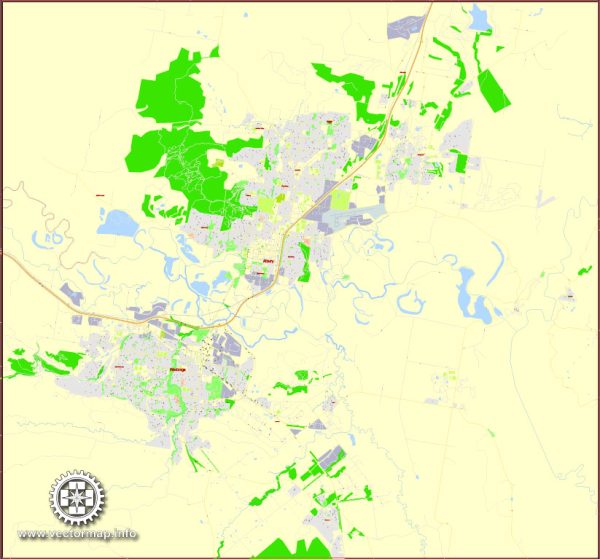Albury-Wodonga is a unique twin-city region located on the border of New South Wales and Victoria, Australia. The development of this region is intertwined with its historical, geographical, and economic context. Here’s a brief description of the history of urban development in Albury-Wodonga:
- Indigenous Inhabitants: Before European settlement, the Albury-Wodonga region was inhabited by indigenous Australian peoples, including the Wiradjuri people. They had a deep connection to the land and lived in the area for thousands of years.
- Early European Settlement: European exploration and settlement in the region began in the early 19th century. Albury, on the New South Wales side of the border, was established in 1839, and Wodonga, on the Victorian side, was established in 1856. These towns were initially developed as river ports along the Murray River, which served as important transportation routes for early settlers.
- Railway Development: The arrival of the railway in the late 19th century had a significant impact on the development of both towns. Albury and Wodonga became important railway hubs, which contributed to their growth and economic prosperity.
- Border Towns: The fact that Albury and Wodonga are located on either side of the New South Wales-Victoria border has influenced their development. The border creates a unique situation where both cities cooperate in various ways, including shared services and infrastructure development.
- Post-War Expansion: After World War II, the Albury-Wodonga region experienced significant growth and urban development. This was partly due to the establishment of the Albury-Wodonga Development Corporation in the 1970s, which aimed to promote balanced growth in the region.
- Educational and Health Services: Albury-Wodonga has developed as a regional hub for education and healthcare services. The establishment of Charles Sturt University and Albury Wodonga Health contributed to the growth and diversity of the local economy.
- Diverse Economy: Over the years, the economy of Albury-Wodonga has diversified, with industries such as manufacturing, agriculture, and retail playing significant roles. The region also benefits from its proximity to major cities like Melbourne and Sydney.
- Urban Planning and Infrastructure: Both cities have undergone urban planning efforts to accommodate their growing populations. They have seen the development of residential areas, commercial centers, recreational facilities, and improved infrastructure.
- Cultural and Recreational Development: Albury-Wodonga boasts a range of cultural institutions and recreational amenities, including theaters, art galleries, parks, and sporting facilities. These contribute to the overall quality of life in the region.
- Continued Cooperation: The collaboration between Albury and Wodonga in areas such as transportation, infrastructure, and governance remains a key feature of their development. The Albury-Wodonga region operates as a single labor market and is often referred to as “Albury-Wodonga” rather than separate cities.
In summary, the history of urban development in Albury-Wodonga is closely tied to the region’s geographical location, historical significance as a border town, and its evolution into a diverse and vibrant regional center. The cooperative efforts between Albury and Wodonga have played a crucial role in their development, making the region a unique and prosperous part of Australia.


 Author: Kirill Shrayber, Ph.D.
Author: Kirill Shrayber, Ph.D.